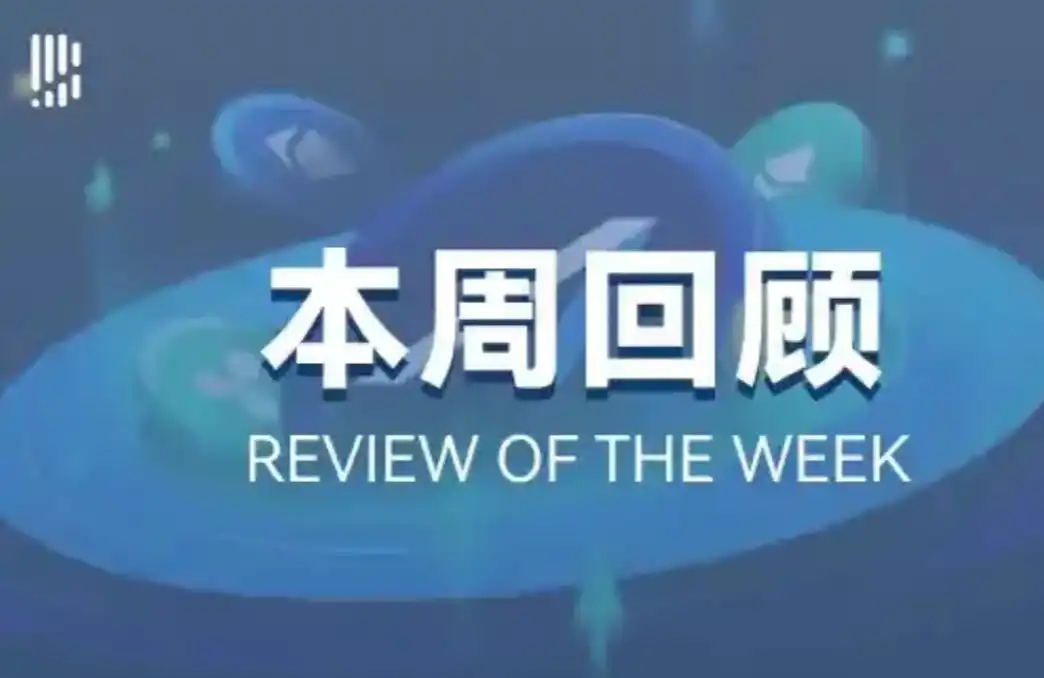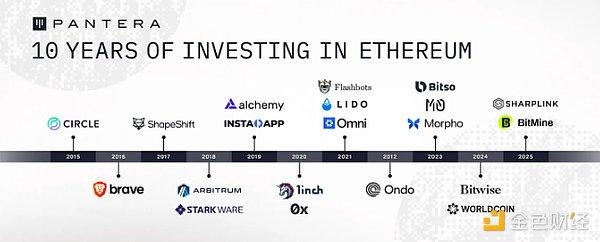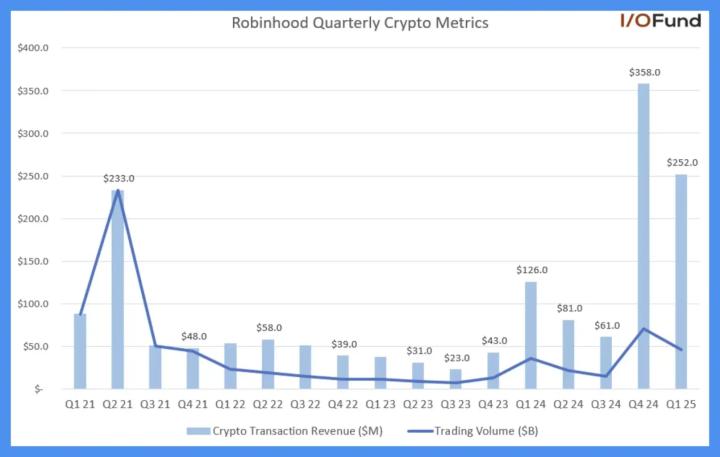The Great Depression of 1929 led to the establishment of the Securities Exchange Act of 1934 and the SEC (U.S. Securities and Exchange Commission), but unfortunately or fortunately, depending on whether you are an e/acc accelerationist or have a regulatory free perspective, the SEC has never since stopped financial innovation or crises.
In 1998, LTCM (Long-Term Capital Management) failed with quantitative methods in Russian bonds, nearly causing a repeat of the 1929 crisis, which did not prevent the 1999 ATS (Alternative Trading System) regulation from taking effect, with quantitative trading, hedging, and arbitrage fully embracing information technology.
After the 2008 financial crisis, regulations were initiated against dark pool trading, but dark pools still exist. In 2025, after Gary Gensler's departure, the SEC is determined to embrace future trends - everything can be on-chain, and everything can be compliant.
- On-chain: RWA is just the starting point, with future trading, asset allocation, and yield generation to be centered around the blockchain, just like using a computer to embrace blockchain;
- Compliance: Airdrops, staking, IXO, and Rewards to build an American-style Super App (Reg Super-App), with all DeFi being re-Americanized.
SEC's Survival Crisis
The Great Depression created the SEC, and cryptocurrency will end the SEC.
SEC Regulatory Shift Timeline: Gary Gensler's Departure → Crypto Task Force → Project Crypto
There are traces to follow. The SEC's regulatory activities can be divided into Gensler's departure in January and the new crypto policies after Chairman Atkins takes office in April, marked by the establishment of the Crypto Task Force, leading to Project Crypto by the end of July, completing a comprehensive "surrender" to crypto.
To understand why Project Crypto emerged, one must look at the SEC's regulatory dynamics from April to July, which were frequent. On one hand, lawsuits with Ripple, Kraken, and others needed to end gracefully; on the other hand, companies like Coinbase and Grayscale became increasingly assertive, actively requesting the SEC to relax regulations.
Especially, the Ripple case became a sign of the SEC's shift from "enforcement-style regulation" to "regulatory service". Subsequently, Kraken's restart of the IPO process proved that the crypto concept was fully accepted by U.S. regulators, and Robinhood also began to push for tokenized stocks.
Approving BTC/ETH ETF physical staking and redemption is the most significant progress, but more coins and forms are still in a case-by-case review state, such as Trump's own group's ETF also being in the queue.
Daring to obstruct America's crypto journey, this is no ordinary SEC, and it must strike hard!
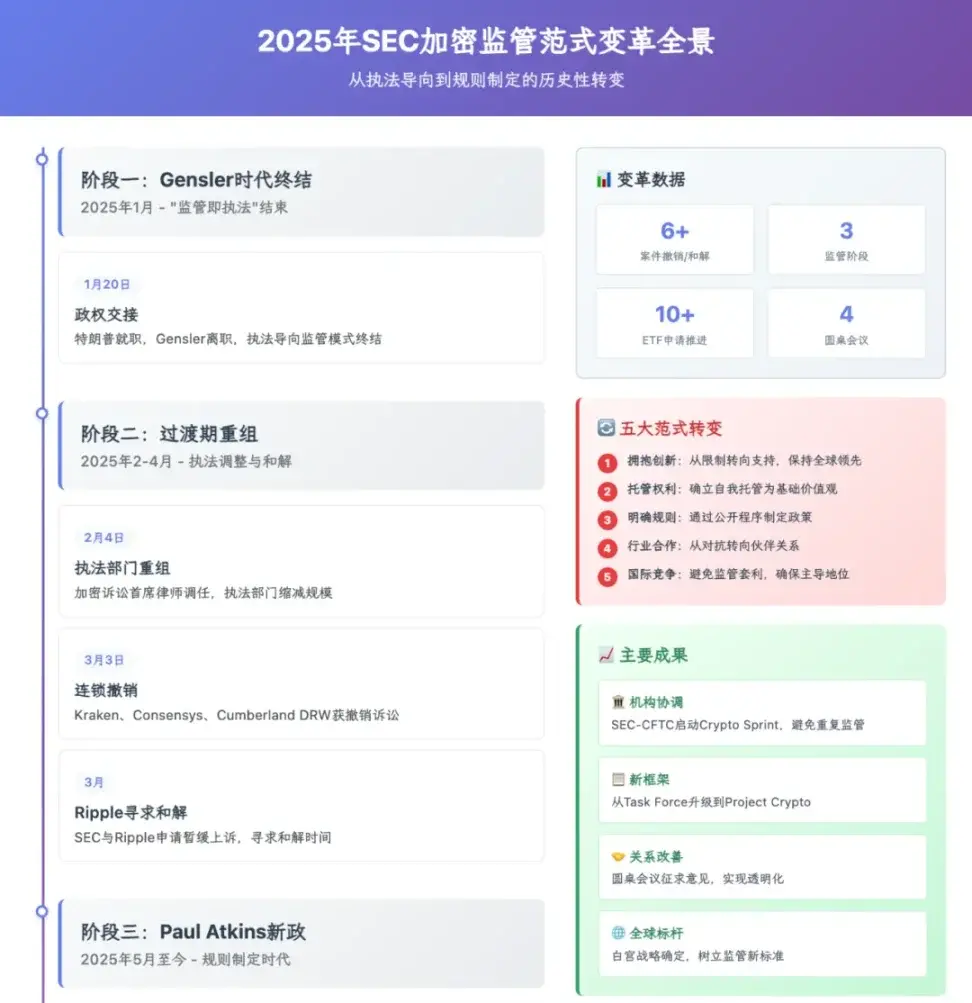
Image description: SEC 2025 Crypto Regulatory Paradigm Shift, image source: @zuoyeweb3
Thus, Trump chose to act unconventionally, supporting the CFTC and launching the Genius Act and other legislative actions. The CFTC is already on the path to expanded powers, and the White House's crypto report essentially accepts all existing DeFi.
The SEC had previously "transferred" stablecoin regulation to banking regulators, with more digital asset regulatory powers being assigned to the CFTC. Where the SEC will go has become a realistic issue that must be considered.
The more heavyweight Clarity Act has not yet become law. If the SEC does not take the initiative, it will be completely usurped by the CFTC, especially as stablecoin issuance has essentially touched the core of securities law. The SEC must preemptively define its regulatory territory through administrative practice before the Clarity Act becomes law.
However, under the current framework, the SEC can do little. Topics include approving more staking ETFs (such as SOL), issuing ETFs for arbitrary coins, tokenized stocks and securities, and approving crypto companies' listings and DATCO companies. The SEC's attitude is to delay and wait, repeatedly postponing and suspending various topics.
On July 17th, there were already rumors that the SEC plans to merge with the CFTC. Just after the SEC's Project Crypto was released, the CFTC's Crypto Sprint plan followed suit, with details being unimportant.
The division between the SEC and CFTC will end in the cryptocurrency era. The SEC's departmental interest maximization can only be to embrace the new era and abandon all dogmas of the old world.
On-chain Transformation of the Real World
DeFi becomes fully compliant, ending the offshore arbitrage era.
Previously written, the Genius Act and Clarity Act did not involve specific DeFi regulation. The former only addressed stablecoins, and the latter was too macro. Now, the SEC's Project Crypto administratively details and frames all aspects of DeFi from personnel, finance, and rules.
No need to go offshore, people come back to the U.S.
In one sentence: What offshore exchanges and overseas foundations could do can now be done domestically in the U.S.
Whether stablecoins, IXO, or tokenization (stocks, bonds), although regulatory attributes differ, the SEC will not easily sue for illegal securities issuance, as long as communication is good.
Secondly, regarding the Tornado Cash founder's case, the SEC has no right to intervene, but can ensure developers' safety, ensuring Builders primarily choose the U.S. for development and encouraging healthy, orderly competition.
DeFi has rules, money returns to the U.S.
In one sentence: No offshore shell companies, and no need to overly worry about decentralization degree.
DeFi's token issuance, on-chain activities (staking, lending, trading, investing), and reward distribution are all compliant, especially with self-custodial trading elevated to "American libertarian values", and various crypto staking ETFs will be fully opened.
Finally, no offshore regulatory arbitrage, all can return to the U.S. for investment, development, and entrepreneurship, ensuring crypto happens in the U.S.
RWA has regulations, coins on the U.S. chain.
In one sentence: On-chain transformation becomes the main theme.
Compared to DeFi, RWA has more specific regulations, distinguishing between stocks, bonds, equities, and physical assets, with windows open for tokenized stocks and private market tokenization (Pre-IPO).
This will be a more profound transformation than computerization, from paper certificates to electronic trading to full on-chain, with any financializable asset to be tokenized, eliminating information asymmetry between the few and the many, though this may take many years.
Ultimately, DeFi will become a new financial form, not a supplement to TradFi, and ETH will become the new carrier of U.S. financial hegemony.
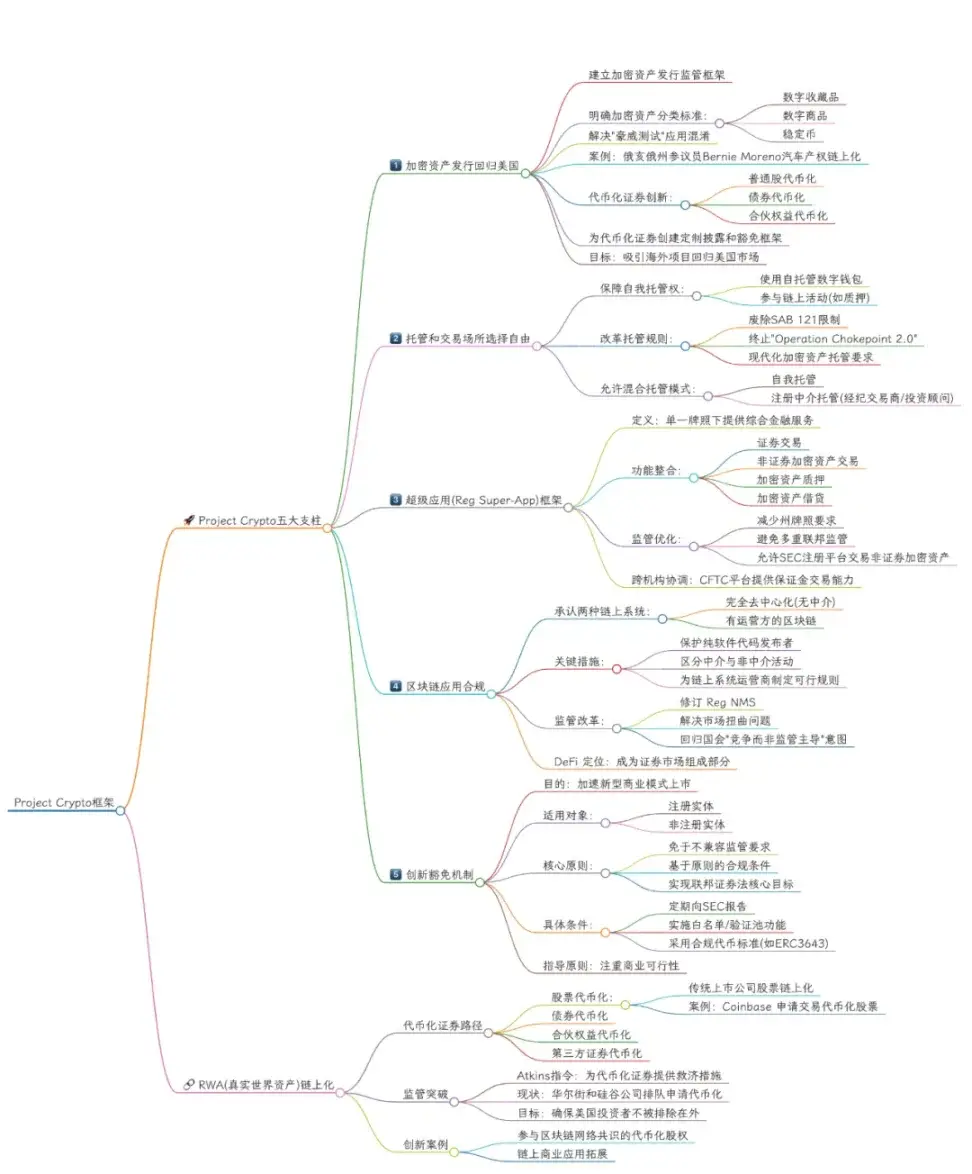
Image description: SEC Project Crypto Framework, image source: @zuoyeweb3
The section title is borrowed from the slogan of Subzero Labs' RWA L1 Rialo. This RWA will no longer be synthetic assets or virtualized custody issuance, but directly open possibilities for any asset to go on-chain, such as the recently listed Figma, which also retains the option to issue tokenized stocks.
Stocks are tokenized stocks, assets are tokenized assets.
Conclusion
A catalyst for financial bubbles, or a necessary path for asset innovation.
From today, Project Crypto can be said to be the securities law moment for DeFi, but how much departmental principles can be implemented and how much they will be accepted by Trump and Capitol Hill remains to be seen.
However, the CFTC and SEC will ultimately merge, because future digital commodities and digital securities will be hard to distinguish.




